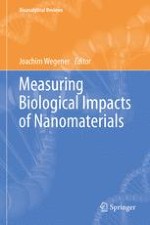2016 | OriginalPaper | Buchkapitel
Nanoparticles in Biomedical Applications
verfasst von : Jacqueline Maximilien, Selim Beyazit, Claire Rossi, Karsten Haupt, Bernadette Tse Sum Bui
Erschienen in: Measuring Biological Impacts of Nanomaterials
Aktivieren Sie unsere intelligente Suche, um passende Fachinhalte oder Patente zu finden.
Wählen Sie Textabschnitte aus um mit Künstlicher Intelligenz passenden Patente zu finden. powered by
Markieren Sie Textabschnitte, um KI-gestützt weitere passende Inhalte zu finden. powered by
